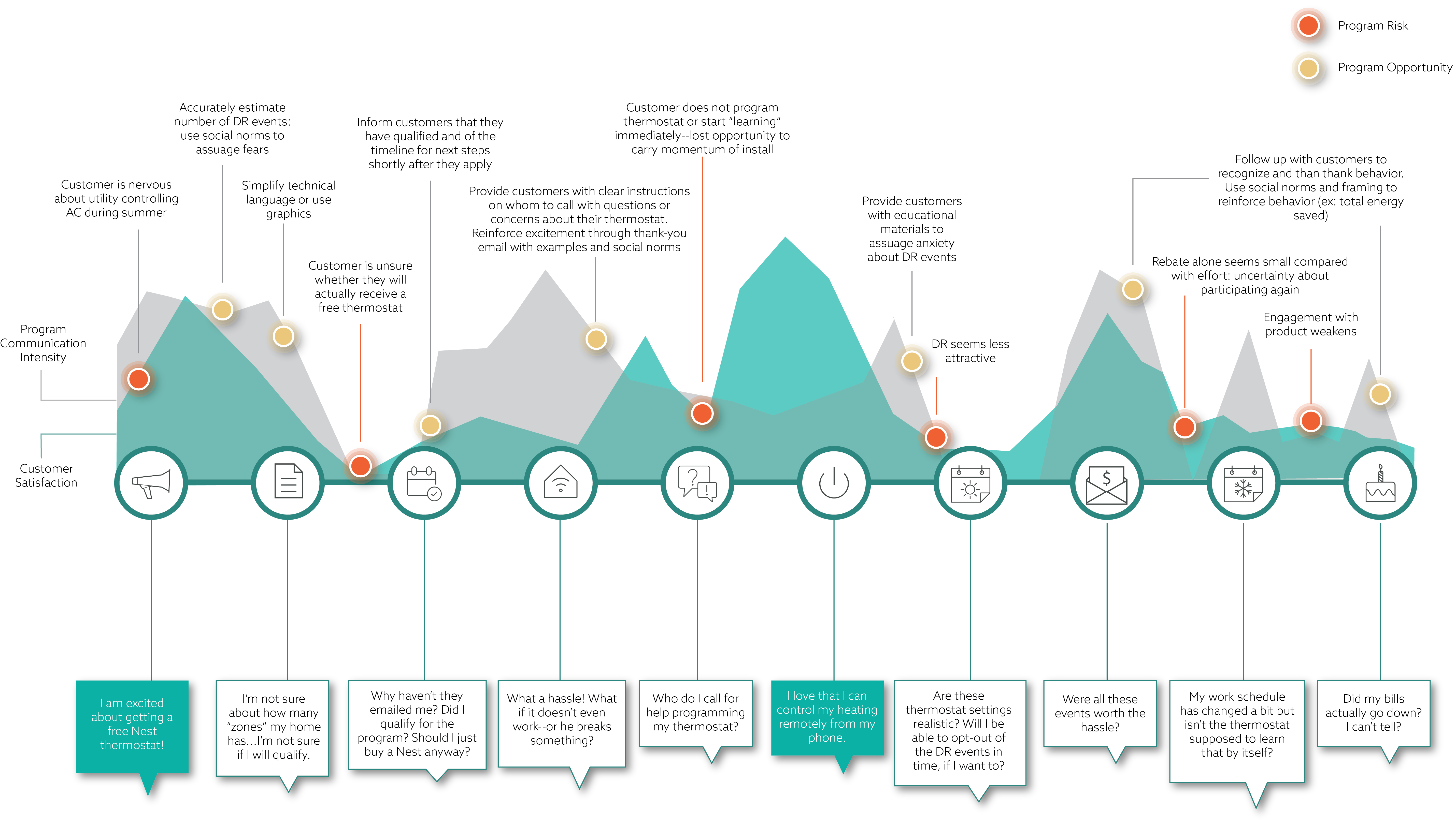
The ILLUME team is currently partnering with a number of clients to build customer journey maps of their services. The use of this technique in the energy industry has grown exponentially over the last few years, however, we still occasionally get questions about what journey maps are and how they can help companies solve real-world problems. We pulled together the top three most frequently asked questions about customer journey maps to help companies think through why they might undertake the process and what might be involved.
Customer Journey Mapping: What is It?
Simply put, a customer journey map is a schematic representation of how a customer engages with a program or product from the vantage point of the customer. Visually, journey maps may represent customer touch points, satisfaction with various processes, pain points, and customer emotions.
Journey maps are used to both document reality (the current state of a customer experience) as well as an ideal reality. Journey maps ask designers, planners, marketers, and program teams to think more creatively about the customer experience and put themselves in the shoes of the customer. They force us to ask questions like – what is this really like for the customer? How much are we asking of their time? How do they feel each time they interact with our program? And the hardest question of all, how can we do better?

What Does a Customer Journey Map Accomplish?
Journey maps help organizations reorient to a customer-centric lens. Clean energy programs and the evaluation of those programs have long focused on measuring end-stage success metrics; for example, the number of participants in a program or energy savings. However, this outcome-centric approach loses sight of what it feels like to be a participant in a program. As an industry, we have an opportunity to shift our programs and research to a more customer-centric model that focuses on understanding how customers engage with and move through energy efficiency programs.

Journey maps offer an opportunity to think more creatively about the customer experience. Journey maps tell the story of the customer experience, from initial contact or entry into a program, though the process of engagement. Journey maps capture key touch points that customers have with a program, and how they perceive and interact with those touchpoints. This customer-centric approach is particularly useful for identifying pain points that customers experience, and opportunities to improve those pain points. From an investment standpoint, the return on investment for the process can often be measured in the increase in customer satisfaction scores as a result of better understanding when system breakdowns are occurring. In some cases, direct cost savings can be recouped through the elimination of redundant or underutilized processes and resources.
The usefulness of journey mapping extends beyond identifying pain points and improving customer satisfaction: it can help align stakeholder needs, ensure that programs are designed to achieve both deep and broad levels of customer engagement, and lead to embedded evaluation research.
How Do You Do It?
Journey maps use a variety of methodological and data collection techniques to inform the development of the customer experience, from in-depth interviews, to review of program marketing channels and materials, to detailed gap action analyses exploring customer pain points. In all cases, it is critical that journey maps use qualitative research to really add color and depth to the customer experience. Without taking the time to have unstructured, open-ended conversations with customers, we can easily skirt over important details or allow confirmation bias to drive how we depict the journey. Who better to paint the picture of a program journey than the customer themselves?
Once the data is collected and the journey map is drafted an in-person, interactive workshop with the key stakeholders helps cement the learnings and to build a cohesive understanding of the “story” of their services. An important consideration for selecting the right time for undertaking a mapping process is staff time. The results of a mapping process are far more effective in driving change if dedicated staff hours are set aside to elicit their expertise and to gain buy-in and census on solutions.
We hope these FAQ’s were helpful and we would love to hear your experiences with customer journey mapping on our twitter handle @illumeadvising #customerjourneymapping
